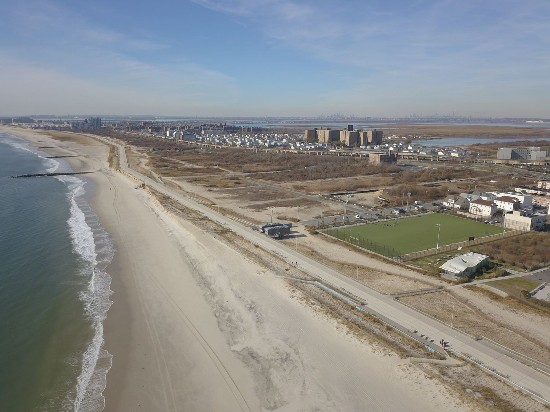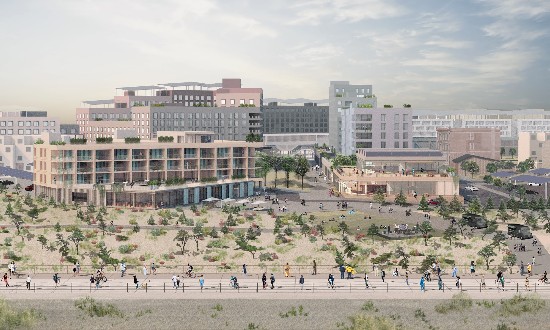Building net-zero buildings let alone neighbourhoods such as the planned Rockaway Peninsula project in New York City are fraught with challenges. It is a hard thing to do, and harder still to accomplish in a mid-latitude city rather than one located in semitropical and tropical areas.
The United Nations last year launched a competition called the UN-Habitat for a Better Urban Future. This challenge is aimed at where most of us live today, in cities Executive Director of UN-Habitat, Maimunah Mohd Sharif, described the need stating, “Cities are at the heart of the climate change problem. But cities are also the key to the solution. Cities need to take climate change seriously and significantly reduce their carbon emissions while improving their resilience and adaptability to climate-related disasters and negative effects.”
The competition chose four cities. Don’t ask me why because I couldn’t find anything in the literature to warrant excluding many more from participating. The four included Bogota, Colombia, Bristol, UK, Curitiba, Brazil and Makindye Ssabagabo, Uganda. The challenge for them was to come up with both green affordable housing plans and net-zero neighbourhoods.
New York City didn’t get consideration. But that hasn’t stopped it from developing its own net-zero neighbourhood plan. For its first project, it has chosen a 47-hectare (116-acre) site in the Borough of Queens where it will build a net-zero community on currently largely vacant land that took a pummeling from Hurricane Sandy in 2012.
In the past, the area chosen was a coastal retreat for wealthy New Yorkers. It is known as the Rockaway Peninsula and today features publicly accessible beaches and a boardwalk, plus a mix of housing that combines gated neighbourhoods and low-income and public housing sites.
How will such a diverse community achieve net-zero? The site will use geothermal energy for heating and cooling. New construction will feature solar rooftop gardens and panels to supplement the geothermal installation. Plans include a storm-surge barrier that will protect the area from sea level rise and storm surges. The total cost of the project is currently estimated at $1 billion.
For the low-income residents of the area, planned commercial development includes community activity amenities with a significant amount of land set aside for green space including a 14.2-hectare (35-acre) nature preserve and urban farm. The oceanfront will feature an enhanced boardwalk and dune forest preserve. Currently, the land is largely vacant as you can see from the picture below.

A big concern for low-income and public housing residents is that improvements will lead to gentrification and the driving up of property values to make staying unaffordable. And for those in the gated communities, the response has been NIMBYism, not wanting anything to change. One thing both sides agree on is that new job opportunities coming from commercial and retail infrastructure development will be welcome.
In 2012, the Rockaway Peninsula was devastated by Hurricane Sandy. The hurricane made landfall first near Atlantic City and hugged the New Jersey shore before barreling into New York City with Queens, Brooklyn, and Lower Manhattan directly in the path. For the Rockaway Peninsula, the devastation was significant, particularly in low-income, low-elevation areas. Storm surge and coastal flooding caused significant physical damage to homes and businesses, and until today the area has remained in a prolonged post-storm recovery phase. That’s why targeting this area for development makes sense.
But the goals of net-zero and climate change resiliency make the project unique. How will the resiliency part be accomplished?
- The plan calls for elevating the land along the coast by between 1 and 2.5 metres (3 to 8 feet).
- New ground floor properties will feature entry levels 4.9 metres (16 feet) above sea level, 0.6 metres (2 feet) above the peak storm surge of Hurricane Sandy.
- New infrastructure will include porous paving to allow water to run into the ground, rain garden stormwater retention systems and rooftop rainwater storage
- A coastal dune forest will be added.
To achieve the net-zero goal, new housing will include solar panels, green roofs, and passive home design to provide airtight insulation.
The novel use of geothermal energy will be a first for the City. Described as a big heat battery by one of the companies involved in developing the area, the geothermal system will store excess heat from the summer which will be retained underground. It will be used for hot water systems and winter heating.
The geothermal solution will use heat pumps and a pipe and heat storage system that will reach 137 metres (450 feet) underground.
Two big challenges that will need to be addressed include:
- retrofitting existing homes and buildings to use the geothermal system.
- dealing with the existing subterranean infrastructure already in place during the building phase.
The latter issue is not trivial. As Cornell University professor, Teresa Jordan, recently noted, “You’re making holes where probably, in a populated city, there are already lots of other facilities using the area under the ground. They’ve already buried all sorts of stuff under the sidewalks, under buildings. To go in and just start digging, is a huge organizational challenge.”
When will the Rockaway Peninsula Project be completed? The estimate by New York City planners and contractors is as early as the end of this decade or one or two years thereafter.
At the launch of the UN-Habitat climate innovation competition back in November of last year, it was noted that cities needed to strengthen plans to combat climate change including developing net-zero neighbourhoods and housing. Only through such efforts will humanity speed up the transition required to achieve sustainability by both mitigating and adapting urban environments to withstand global warming.









